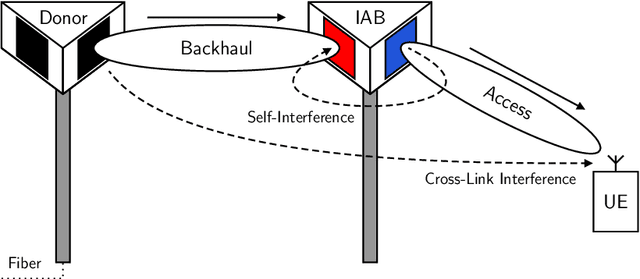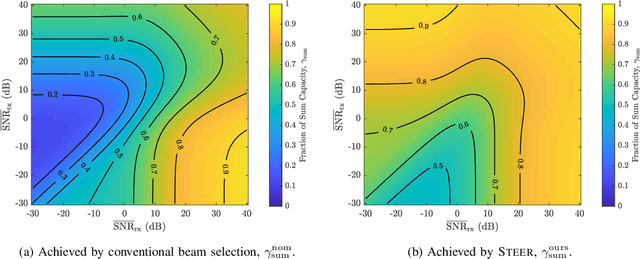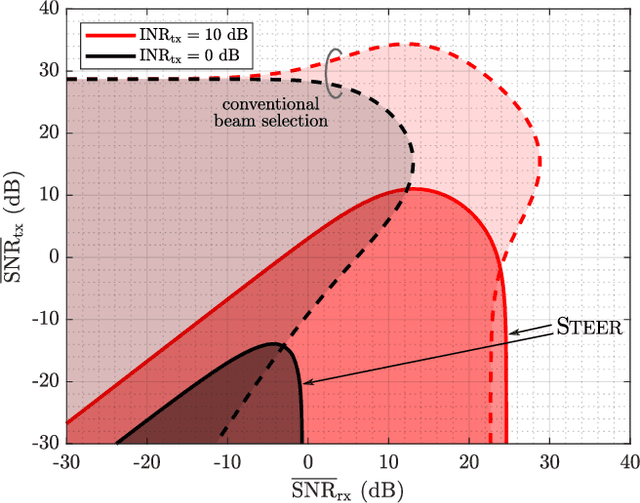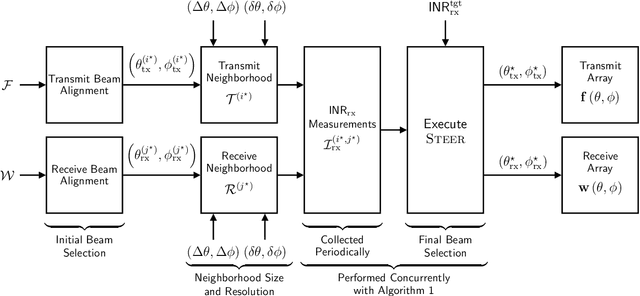STEER: Beam Selection for Full-Duplex Millimeter Wave Communication Systems
Paper and Code
Jul 15, 2022



Modern millimeter wave (mmWave) communication systems rely on beam alignment to deliver sufficient beamforming gain to close the link between devices. We present a novel beam selection methodology for multi-panel, full-duplex mmWave systems, which we call STEER, that delivers high beamforming gain while significantly reducing the full-duplex self-interference coupled between the transmit and receive beams. STEER does not necessitate changes to conventional beam alignment methodologies nor additional over-the-air feedback, making it compatible with existing cellular standards. Instead, STEER uses conventional beam alignment to identify the general directions beams should be steered, and then it makes use of a minimal number of self-interference measurements to jointly select transmit and receive beams that deliver high gain in these directions while coupling low self-interference. We implement STEER on an industry-grade 28 GHz phased array platform and use further simulation to show that full-duplex operation with beams selected by STEER can notably outperform both half-duplex and full-duplex operation with beams chosen via conventional beam selection. For instance, STEER can reliably reduce self-interference by more than 20 dB and improve SINR by more than 10 dB, compared to conventional beam selection. Our experimental results highlight that beam alignment can be used not only to deliver high beamforming gain in full-duplex mmWave systems but also to mitigate self-interference to levels near or below the noise floor, rendering additional self-interference cancellation unnecessary with STEER.
 Add to Chrome
Add to Chrome Add to Firefox
Add to Firefox Add to Edge
Add to Edge